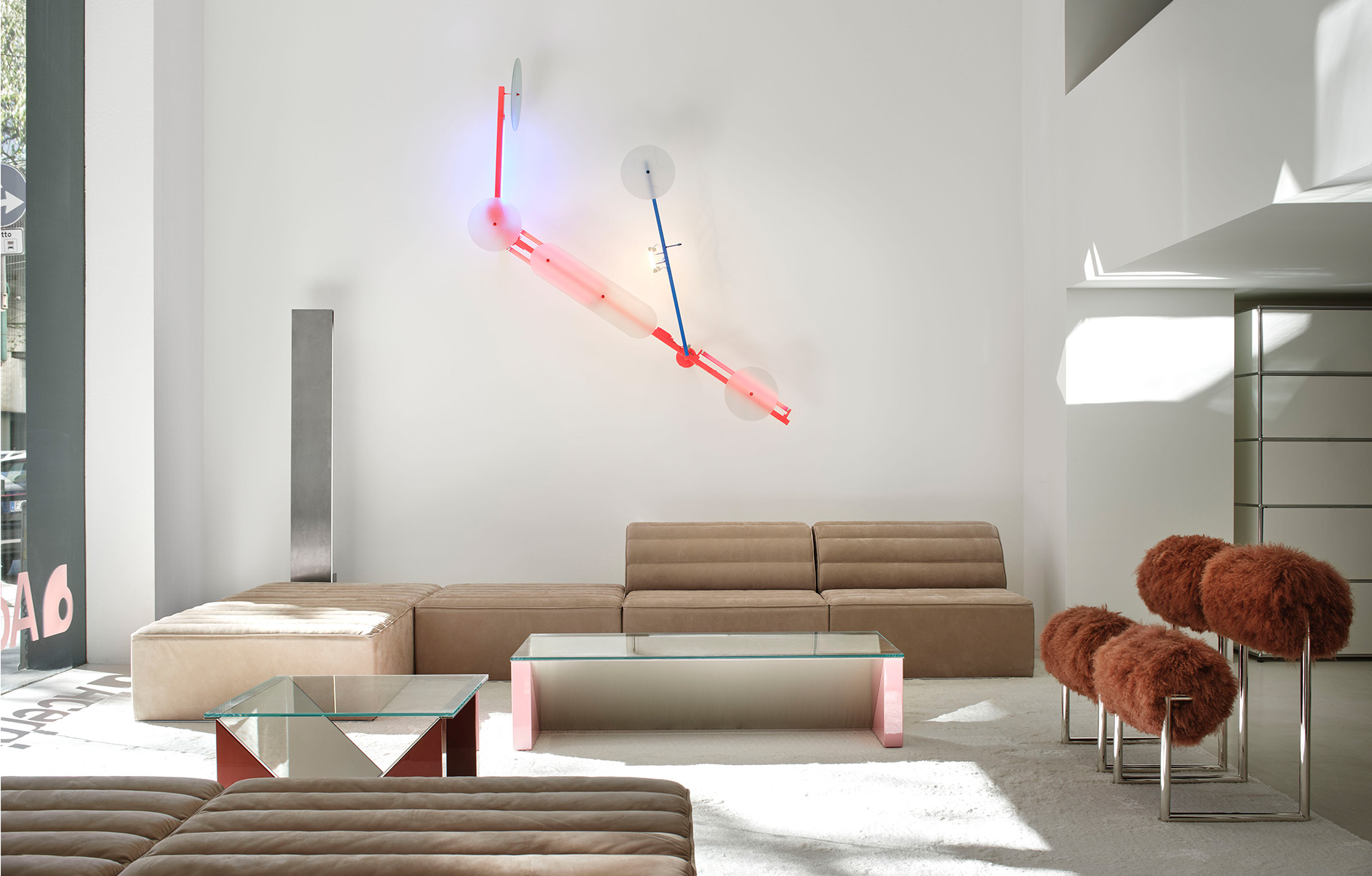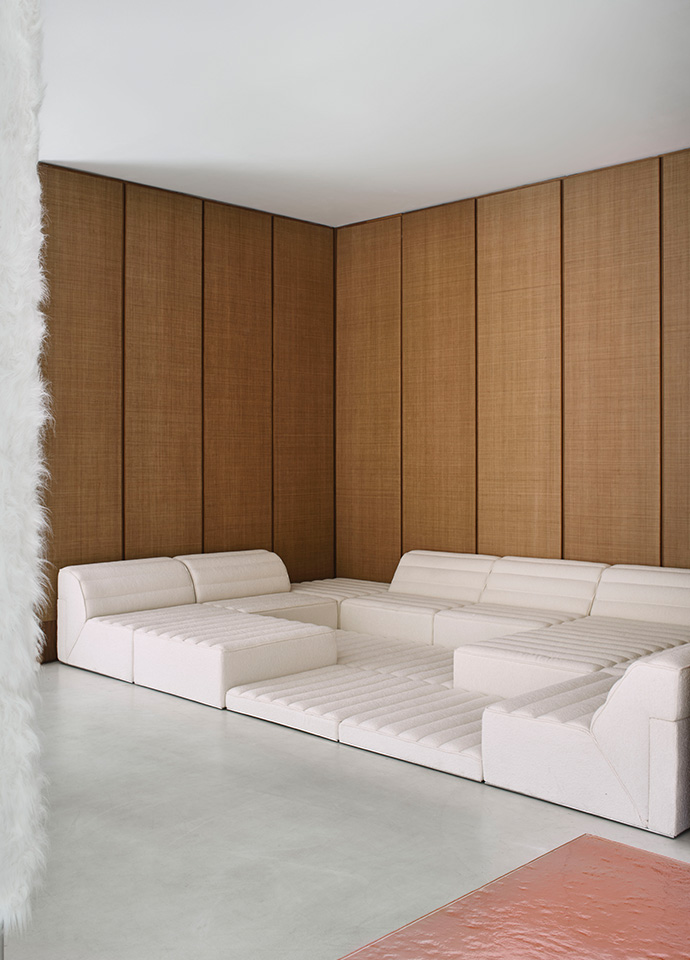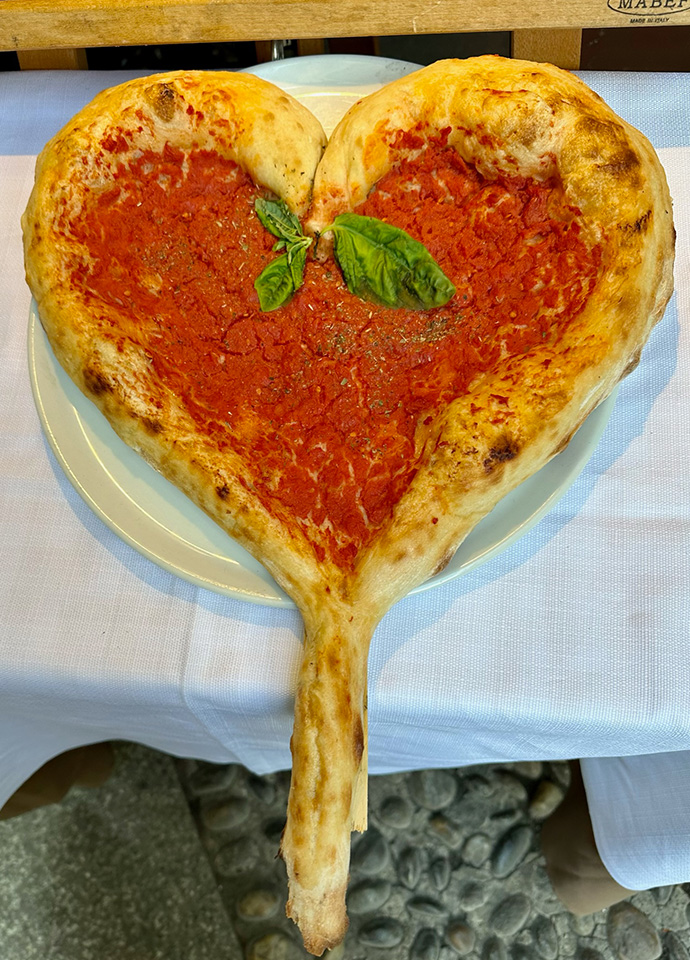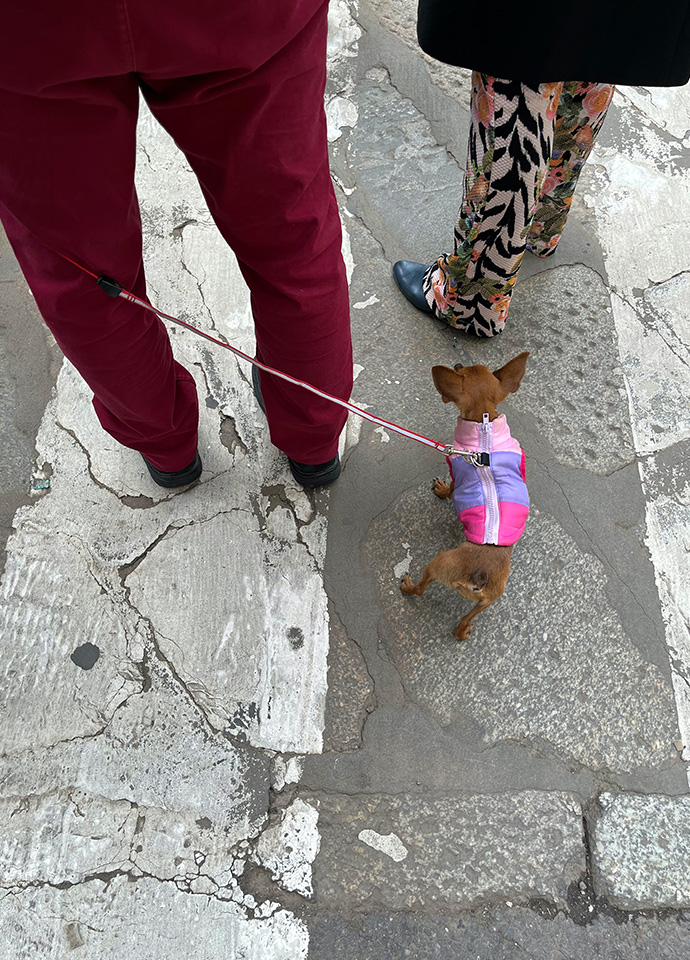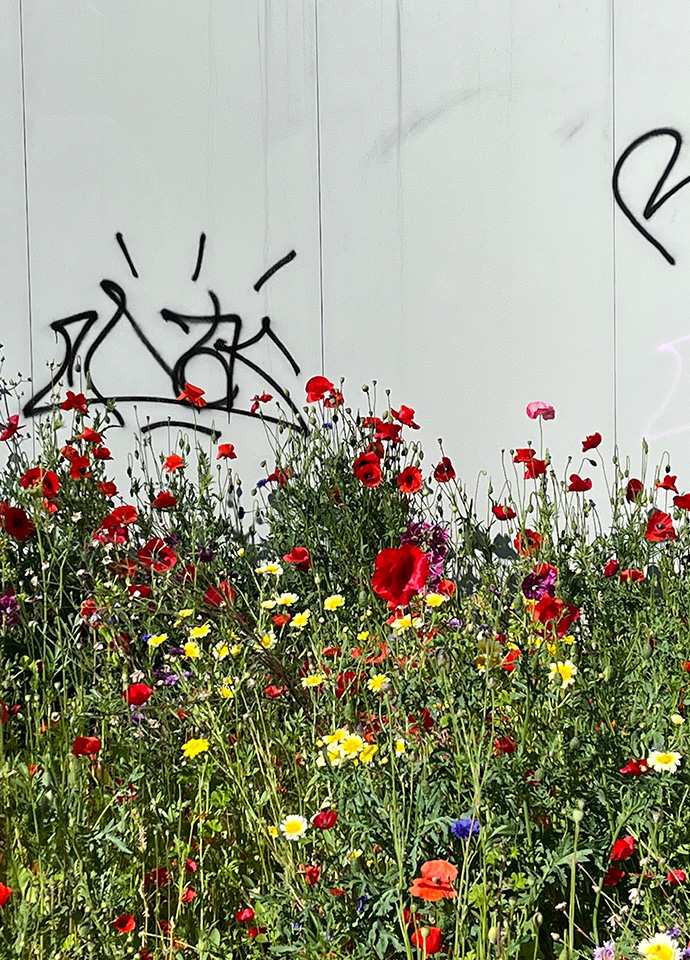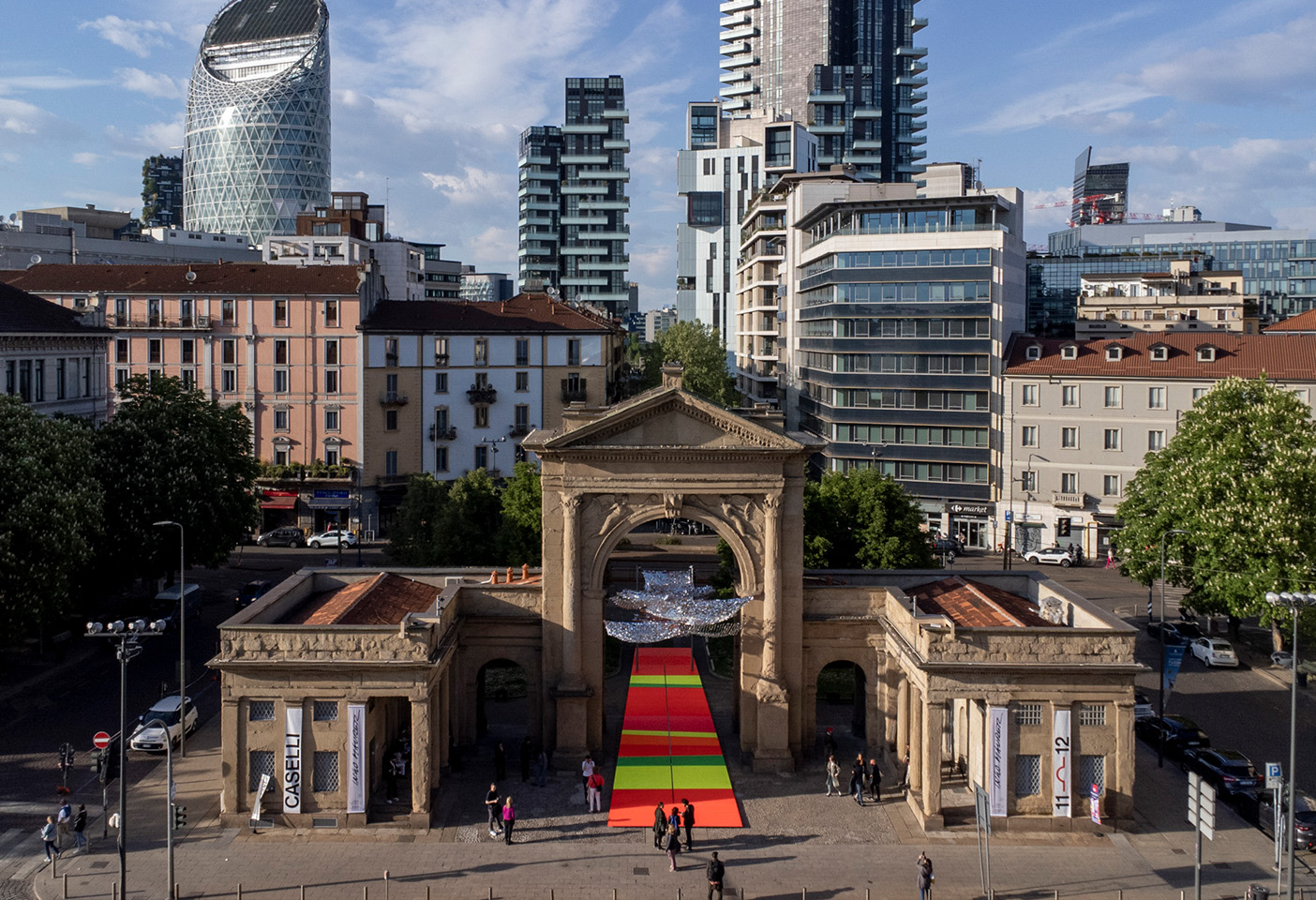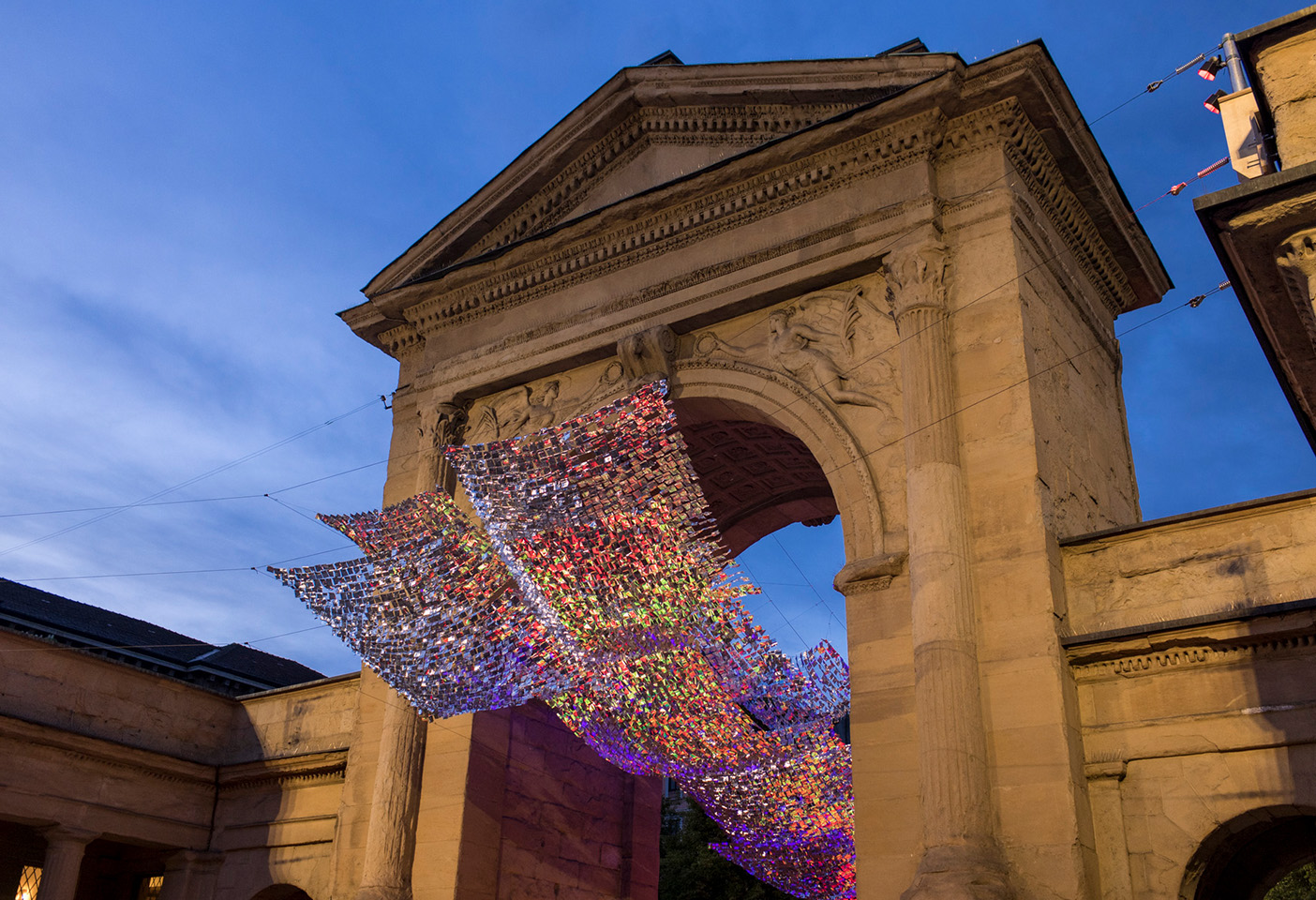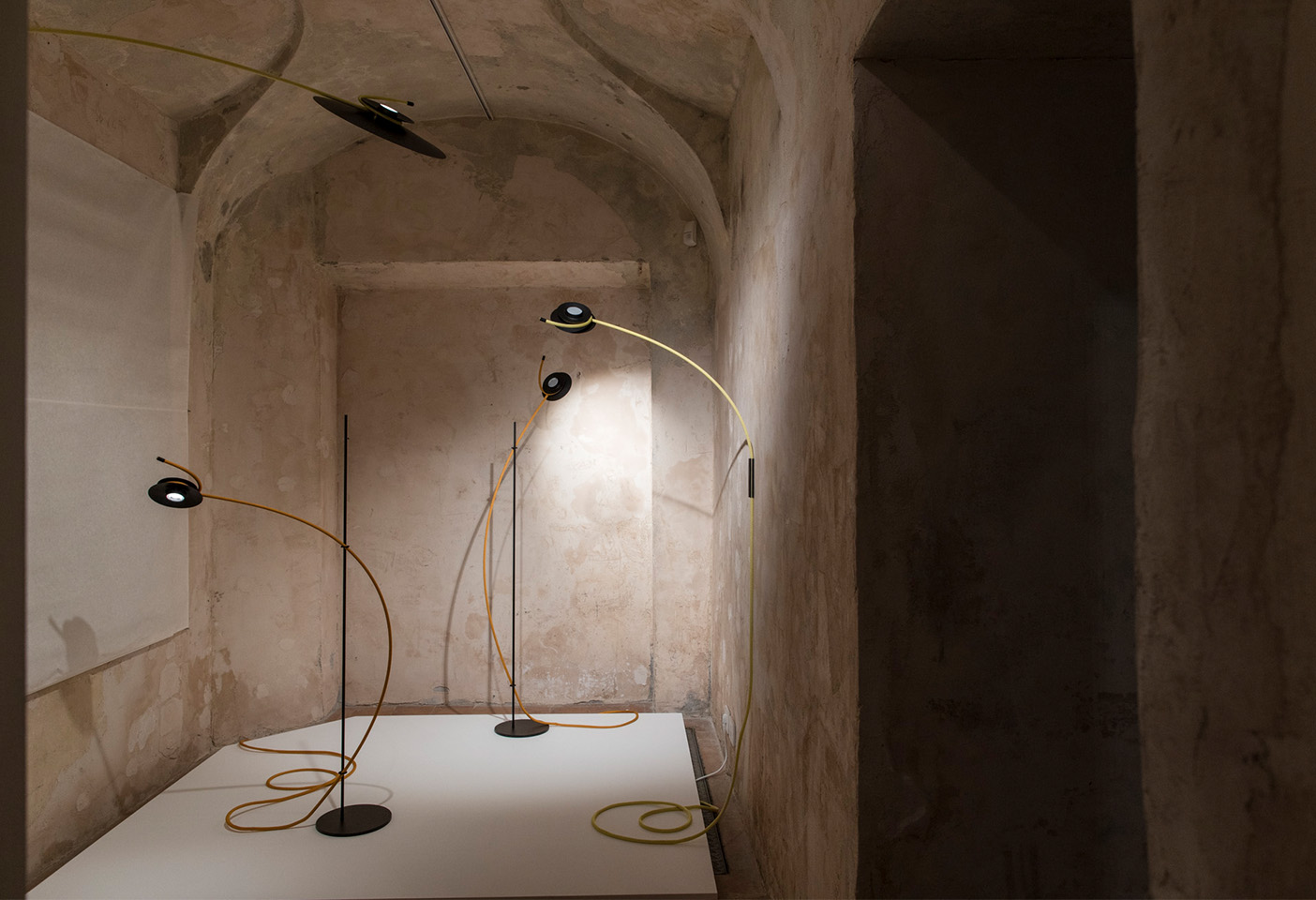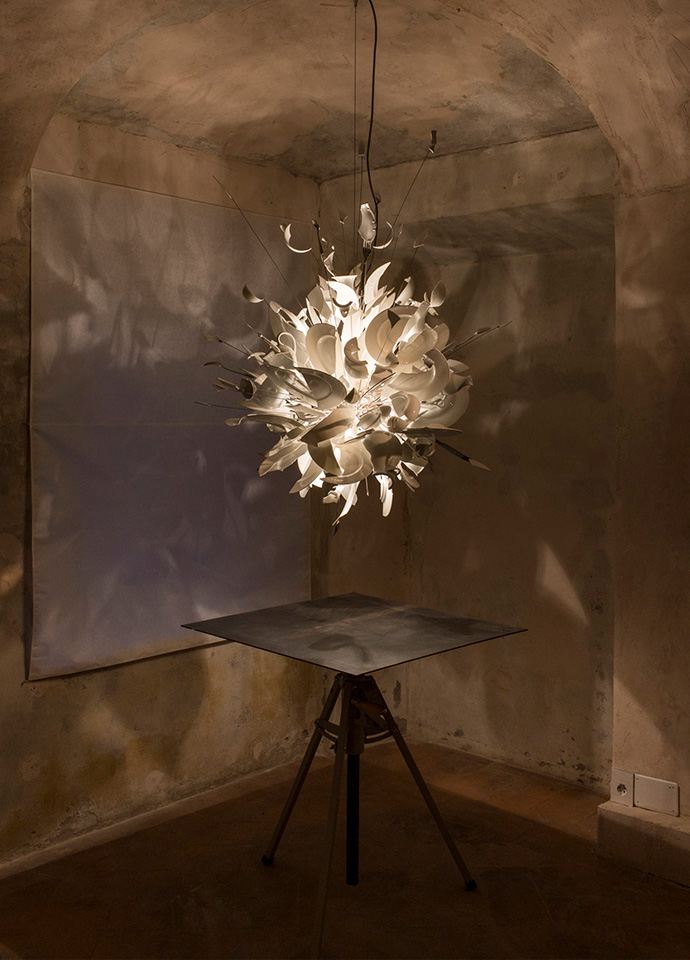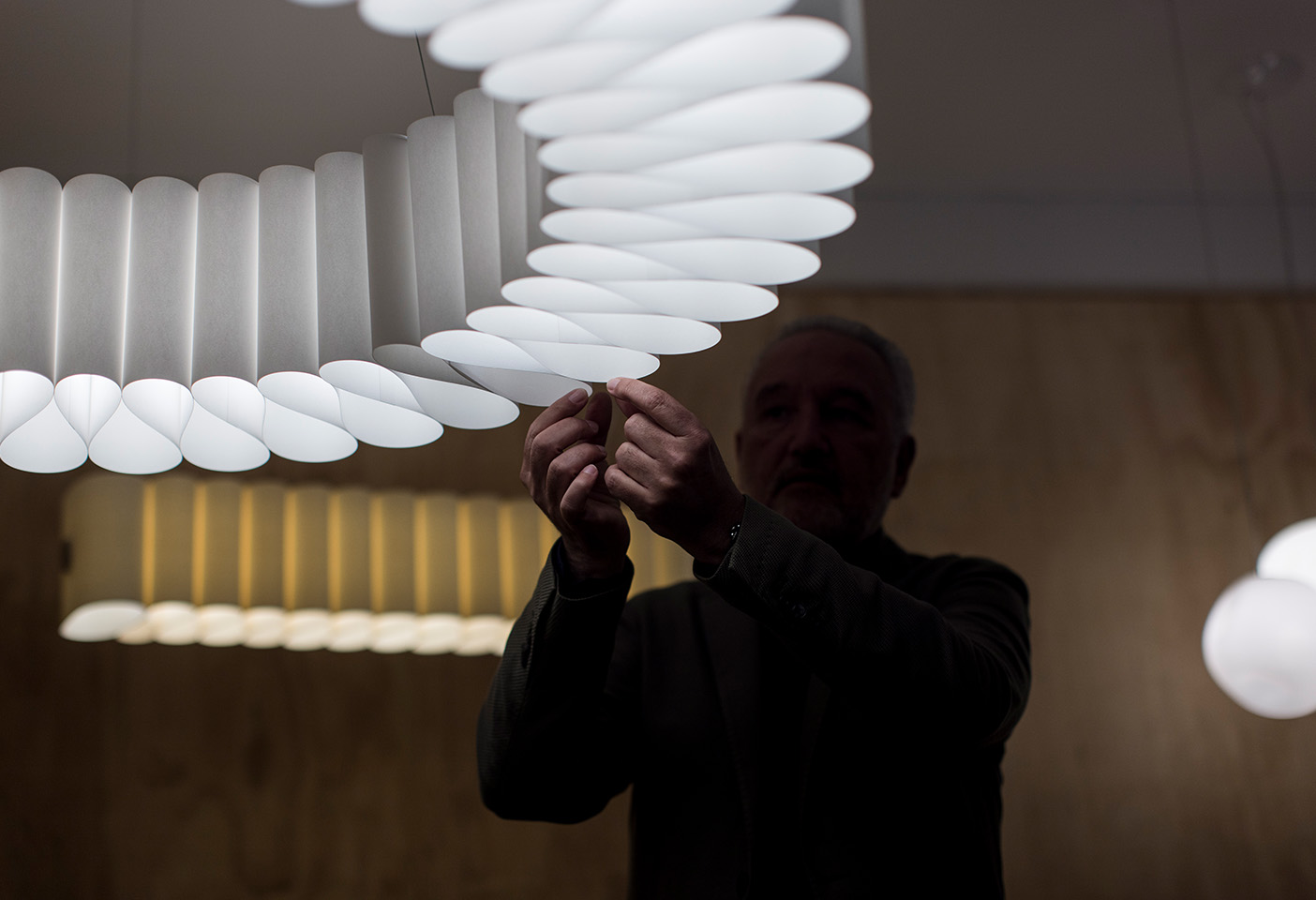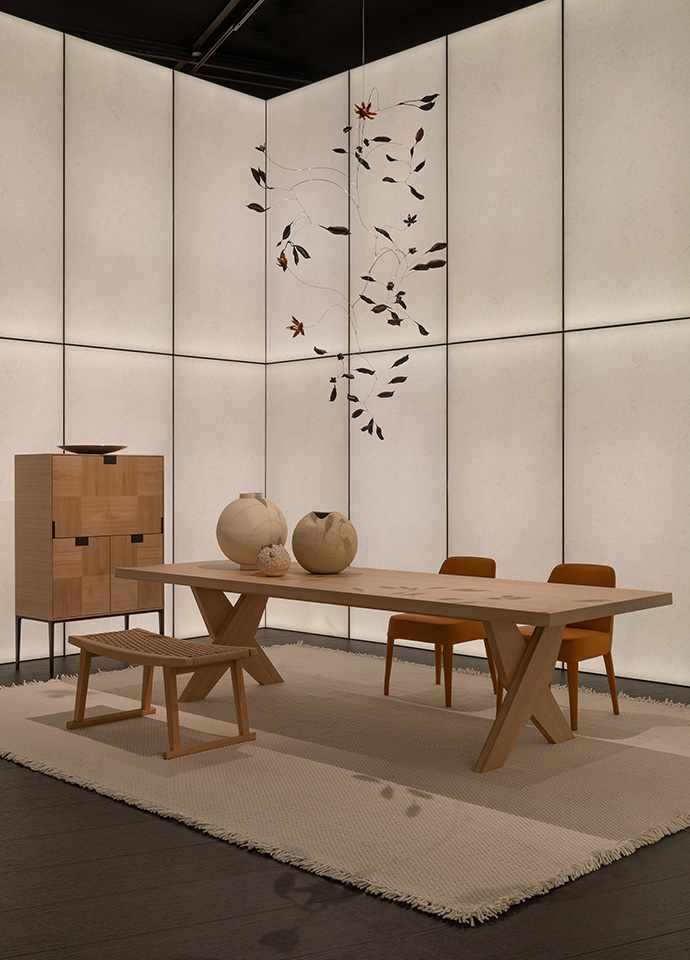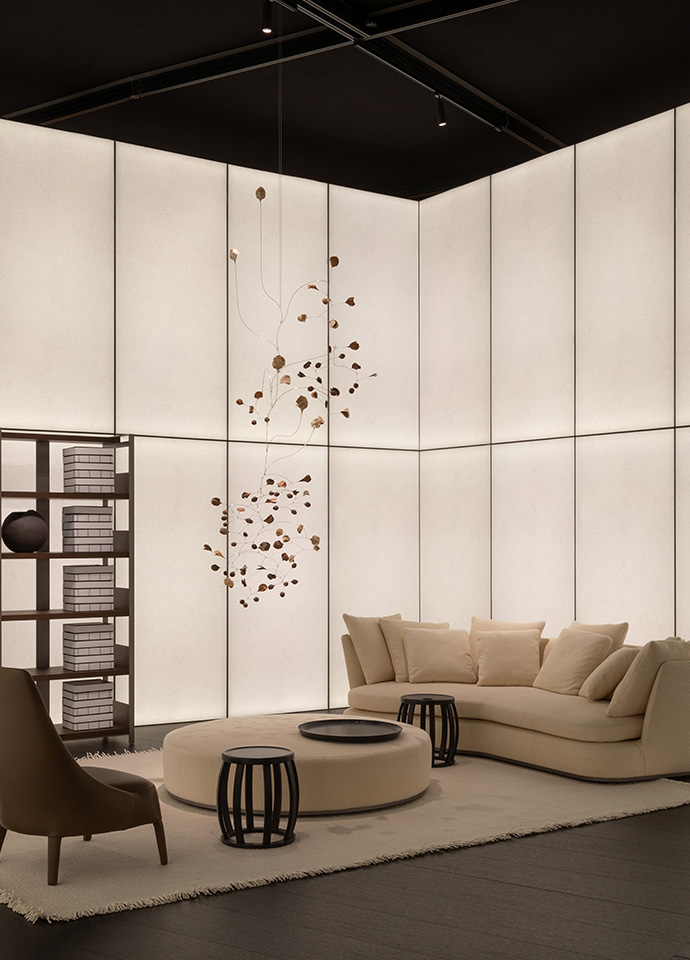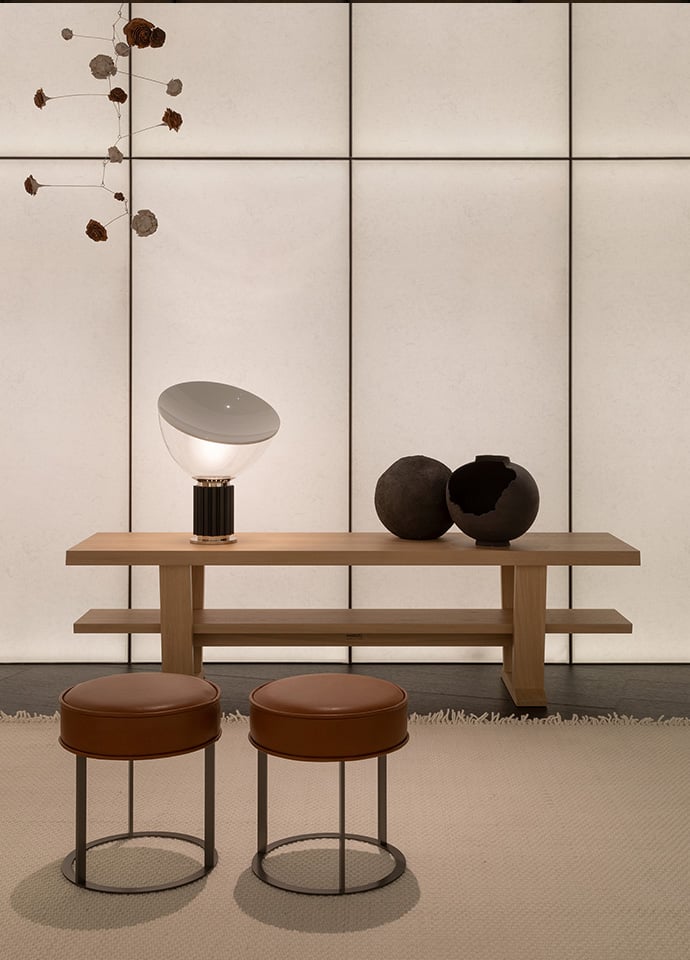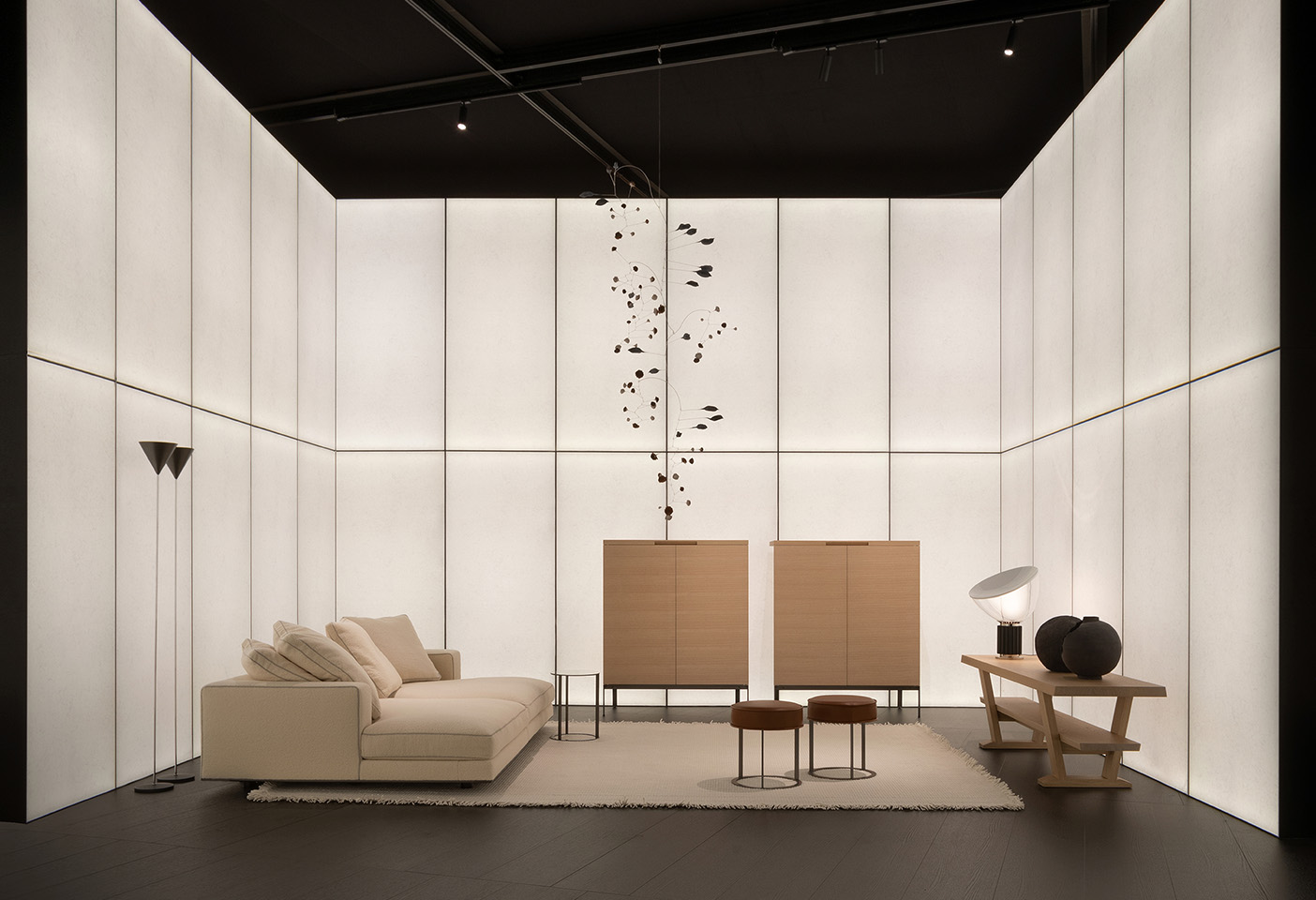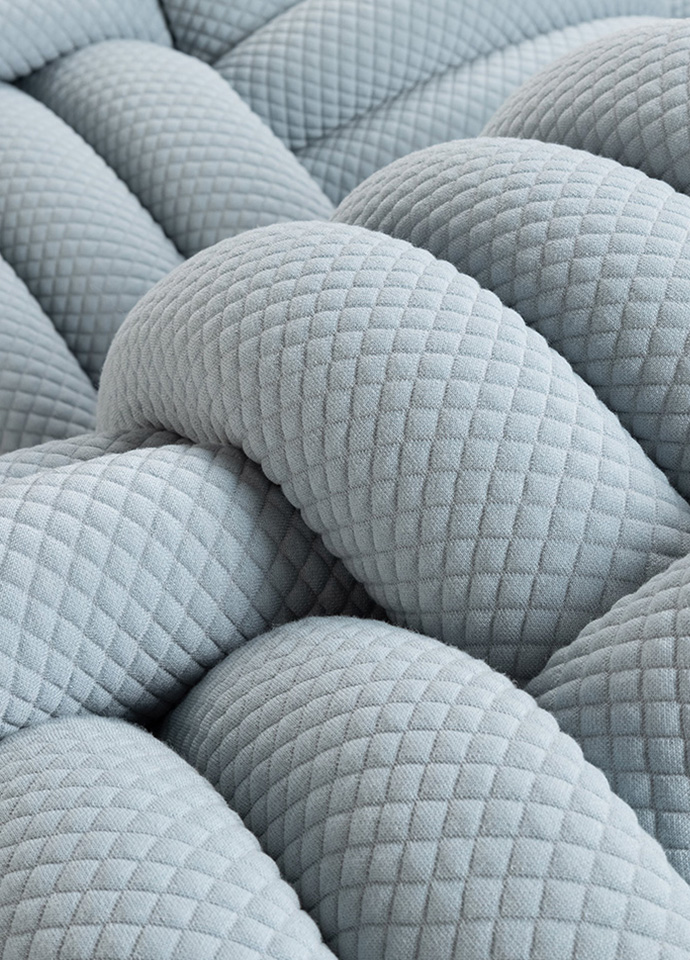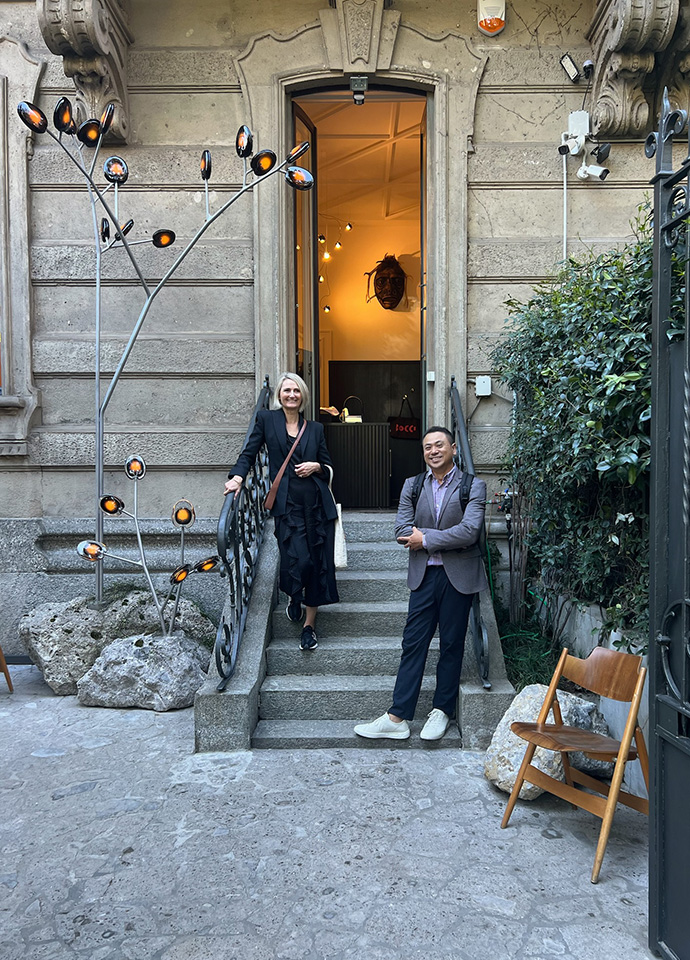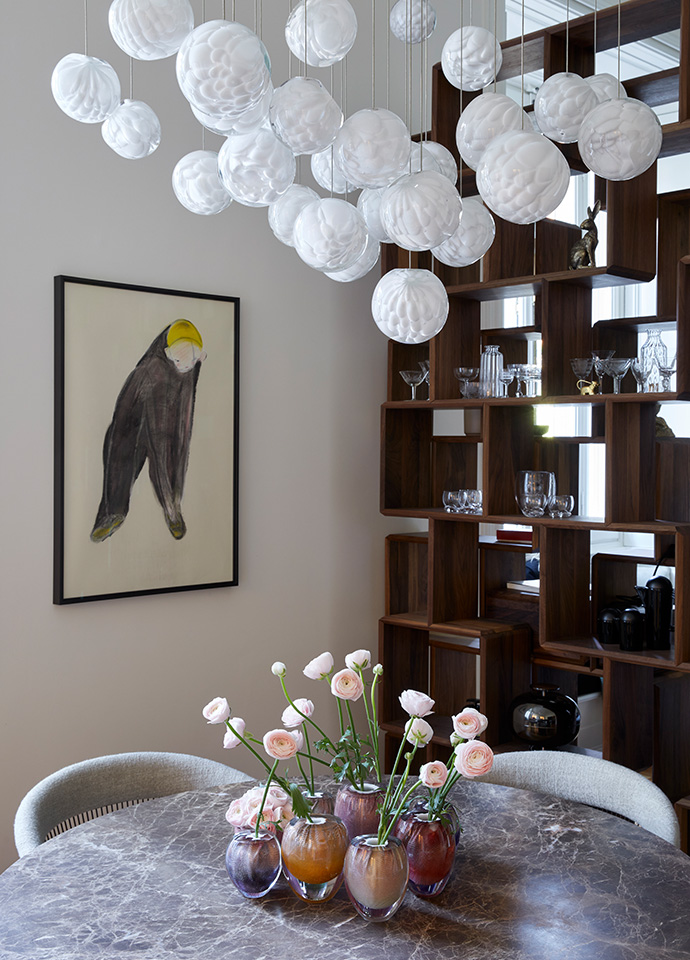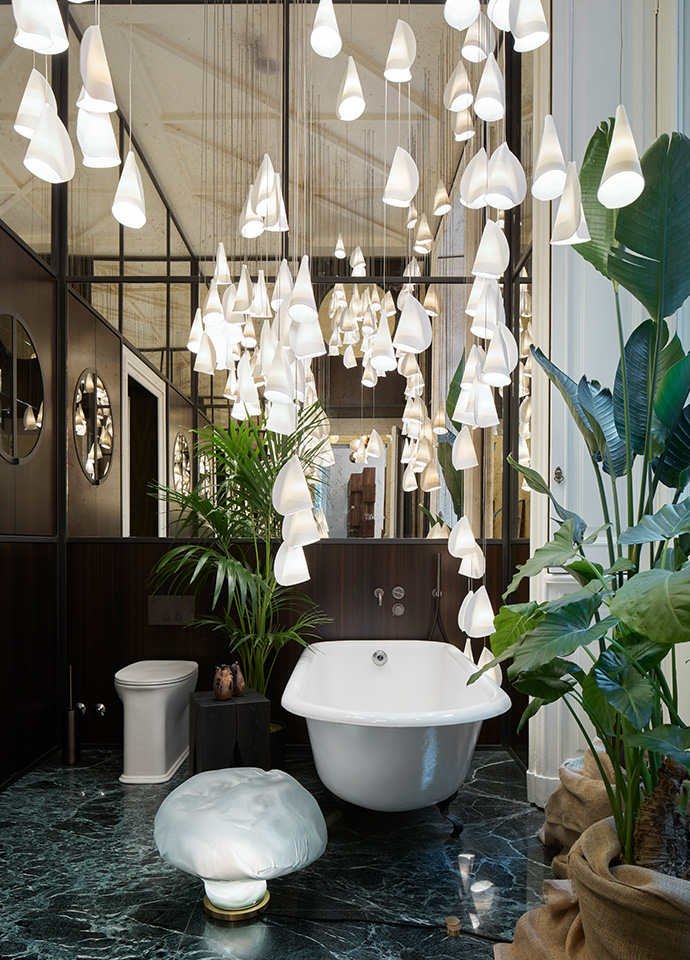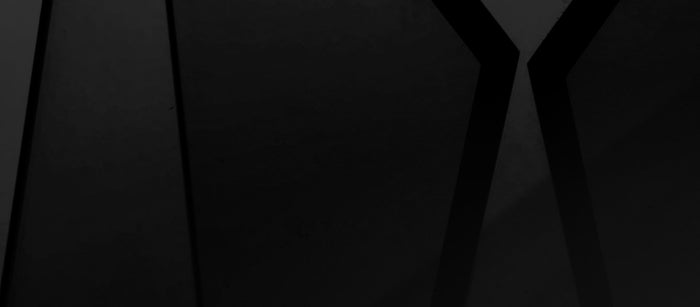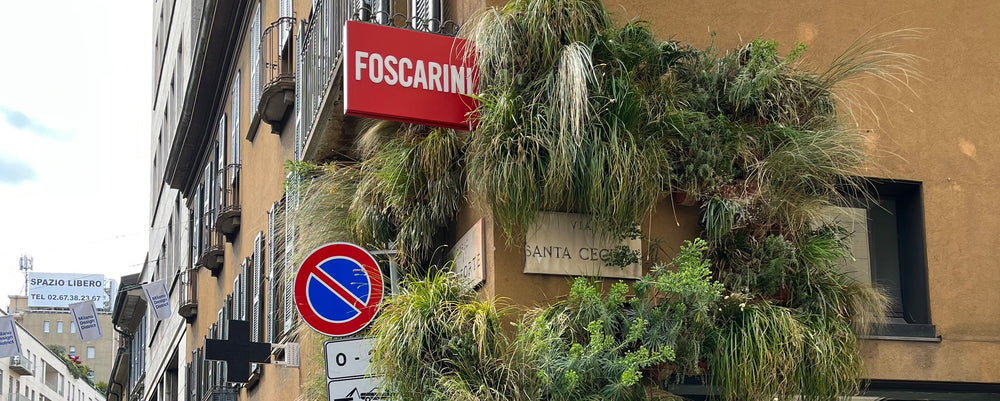
From Foscarini's Fleur lamp and its whimsical moment of joy highlighted by the brand's (Im)possible Natures installation, Edra's opulent Palazzo Durini with live jazz, spritz and the iconic red velvet Getsuen chairs by Masanori Umeda, Moooi's sumptuously woven Knitty chair by Nika Zupanc, to Bocci's new Milanese headquarters where the brand's artful lighting drew the crowds inside a classic Italian apartment, the final of our three-part series on the Salone del Mobile explores the installations, textures and lighting that stole the show.
As lighting and furniture brands showed new collections and installations across the city, this year, Leighton Clark, CEO of Space and Poliform, observed that business investment and brand focus saw design companies invest heavily in establishing their unique identity. ’From new showrooms and events, down to increased branding on products and accessories, branding was everywhere.'
One of the biggest brand stories in Milan was Ingo Maurer’s new home with the iconic Milanese lighting company Foscarini. With both companies renowned for innovation, it was seen as a match made in heaven. For Foscarini, whose long collaboration with designers including Patricia Urquiola, Rodolfo Dordoni and Ferruccio Laviani; and Ingo Maurer, the lighting company renowned for developing and producing exceptional design lamps in Munich; the majority stake in the Ingo Maurer brand presents an exciting pairing.
This year it was the streets of Milan that again delivered in spades. Showrooms literally overflowed with new designs and ideas that drew in the crowds. As Jessica Gombault and Alexandra Kidd of AK.ID remarked: 'Whilst the Fiera was impressive and the exhibitions certainly worth the trip outside the city, our hearts and creative flair was really beating hard with the Fuorisalone and its immersive and beautifully curated shows that spread all over the city.'
(Im)possible Natures at Foscarini
Presenting the Foscarini collection inside (Im)Possible Natures at their Spazio Monforte showroom, Foscarini transformed the street into a wild landscape. The unexpected garden, made of grasses, herbs and uncultivated plants, was the setting for the new Fregio lamp by Andrea Anastasio; as well as Fleur, a wireless table lamp with an elegant and careful proportion and an unexpected dual role as a vase for fresh flowers, and the finessed Chapeaux, also by Rodolfo Dordoni; Danish designer Felicia Arvid’s Pli, a poetic suspension lamp made in wood and paper; and Ludovica and Roberto Palomba’s Hoba, a family of blown glass lamps that translates the perfect imperfection of handcrafted objects into a manufactured lamp they describe as the physical representation of ‘anti-geometry’.
‘In Fregio,’ Foscarini's creative director, Ferruccio Laviani, remarked, ‘there is nature – flowers – and man's great ability to work ceramic material. It is a new object, but at the same time it is ancestral, it touches immortal and universal chords, accompanying our gaze towards the beauty of nature and towards the well-being we feel when we observe it and immerse ourselves in it.’

Foscarini's immersive wild garden in Milian, featuring Fregio, designed by Andrea Anastasio with Bottega Gati, a suspension and wall lamp that directs light down and up. Photo c/o Foscarini.
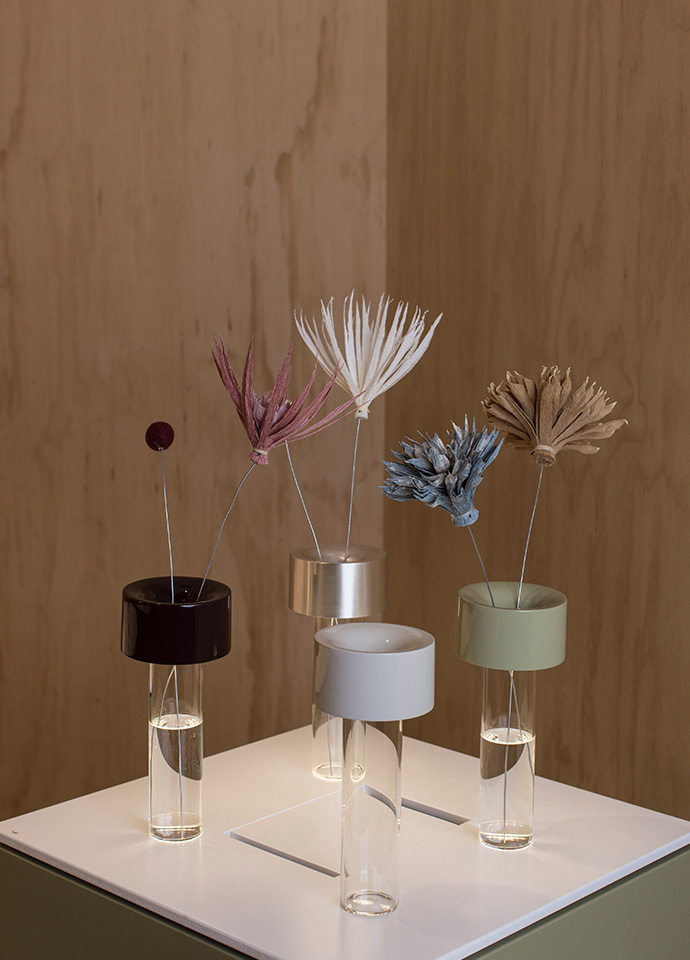
The whimiscal Fleur light, a wireless table lamp with an elegant and careful proportion and an unexpected dual role as a vase, designed by Rodolfo Dordoni. Photo c/o Foscarini..
Ingo Maurer at Porta Nuova
While at Ingo Maurer, the impressive installation of light, art and architecture, demonstrated the ability of Ingo Maurer's team to playfully switch between traditional lighting concepts and experimental and innovative staging. Illuminating Porta Nuova, the monumental archway was transformed with a 30 metre carpet painted in fluorescent colours, above it a shimmering reflective surface absorbing and reflecting the colours day and night. Inside, seven rooms showed new pieces and classics from the collection. Amongst them, highlights like Ms. Bowjangles by designers Anna Boch and David Engelhorn. Curved from spring steel covered with coloured textile, it seems to ascend effortlessly. Its orange rope dancing around a 1.4 metre high metal pole, with a striking shade and an elegant, almost futuristic aesthetic.
Bocci’s new Milanese headquarters
Celebrating its first permanent base in Milan, Canadian lighting brand Bocci launched a range of new lights and unveiled its dynamic new brand identity by London-based Studio Frith. Renowned for its artful lighting, Bocci’s highly bespoke collection is the result of experimentation with glass and the more mercurial aspects of its manufacture. This year the collection was presented inside their new home, an intimate early 20th Italian apartment on Zona Vincenzo Monti with a garden featuring their outdoor collection, series 16.
Also on show was the newest design in the 118 collection, its glass spheres with ethereal appearance revealing the steel cages used in their formation. ‘For many years, I have been researching and experimenting with fabrication processes, looking for novel methods that create a unique form,’ remarked Omer Arbel, co-founder of Bocci and master of experimentation, at the launch. ‘Whilst each 118 is created in the same way by blowing molten glass through a steel cage, the end result is always one-of-a-kind,’ Arbel explained. ‘Just like the weather outside our workshop, to the glassblower’s mood, to the chemical composition of the glass, the 118 takes form in response to numerous uncontrollable factors.’ Bocci’s new headquarters in Milan will join Bocci’s exhibition space and studio in Berlin, set to open in September this year, creating a European hub for the brand.
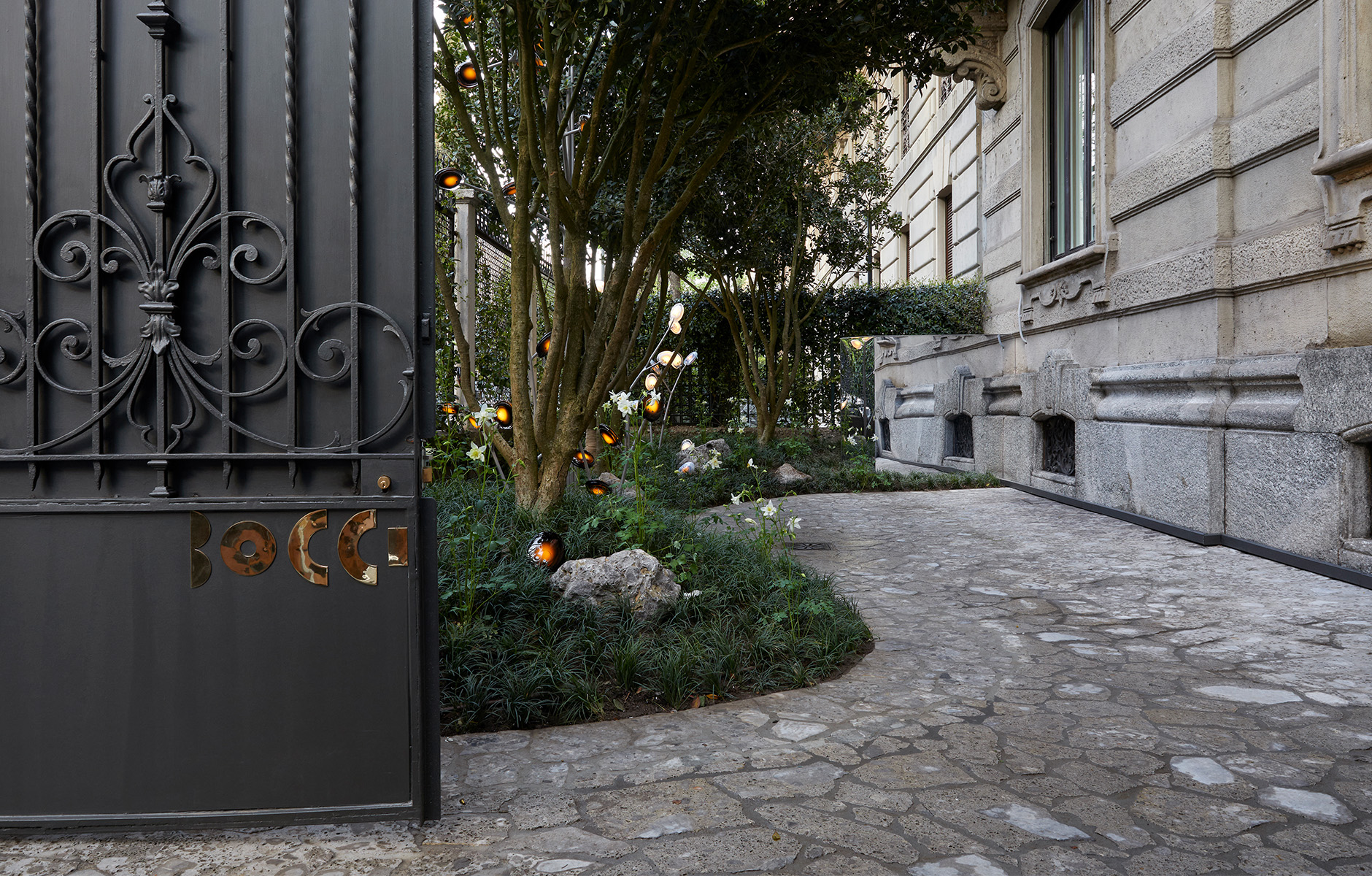
Canadian lighting brand Bocci and its new home in Milan, an intimate early 20th building Italian apartment on Zona Vincenzo Monti with a garden that also featured their outdoor collection 16g. Photo c/o Bocci.
'Whilst each 118 is created in the same way by blowing molten glass through a steel cage, the end result is always one-of-a-kind... Just like the weather outside our workshop, to the glassblower’s mood, to the chemical composition of the glass, the 118 takes form in response to numerous uncontrollable factors.’
Omer Arbel, Bocci
A modernist utopia via Nanda Vigo and Claudio Salocchi at Acerbis
At Acerbis, art directors Francesco Meda and David Lopez Quincoces recreated the atmosphere of the 1970s Milanese living room with the installation ‘Nanda Vigo & Claudio Salocchi – a Milanese Utopia,’ that celebrated the extraordinary creative energy of the time with a collection of knock-out pieces highlighted by Due Più by Nanda Vigo and Free System by Claudio Salocchi.
Elegant bouclé and nubuck fabrics in soft shades for Free System, and a lavish white, black and rust Mongolian fur upholstery for Due Più, reinterpreted the allure of the 70s. It’s a collection that has added to the 150-year expertise of Acerbis and their Remasters collection’s deep catalogue that features the designs of legends including Massimo and Lella Vignelli, and Vico Magistretti.
The Italian designer, architect, and artist, Nanda Vigo was a trailblazer in Milan in the 1960s, her interdisciplinary practice working between architecture, furniture and art defined by the designer’s curiosity and creative collaborations. Nanda Vigo’s armchair known as Due Più is an astonishing, enigmatic object that dates back to 1971. Although the chair has been used for several interior architecture projects, before now it had never been in production. Pared back to the essential elements, it’s a piece that is surprisingly ergonomic and comfortable in its three uses: chair, side chair with the top roller as an armrest, and inverted chair where the backrest-roller supports the forearms. An emblematic design that blends Vigo’s ‘esprit de géométrie,’ its minimalist steel frame holds a pioneering spirit topped off by the exuberant Mongolian fur (Vigo preferred it to be opulent and voluminous), currently presented by Acerbis with reclaimed furs in tune with circular economy principles.
‘All the products in the Remasters collection were purposely chosen as icons of experimentation,’ remarked Francesco Meda at the launch of the collection. ‘Claudio Salocchi’s design explores the design research of the decade from the 1970s to the 80s when new ways of living and experimentation were at the core of the Italian designers’ thinking.’
Like Vigo, Salocchi was a radical innovator in the early 70s, he revolutionised the concept of living room suggesting that it could be made up of uninterrupted seating. In 1973, he designed the Free System: a collection of padded furniture pieces built on the concept of ‘operated flooring’ inspired by the tatami mat, where each padded unit could be placed side by side in a multitude of combinations. With its completely modular and sectional elements, it’s a design that is the embodiment of the modern movement’s vision of utopia. Each element (tatami, pouf and seat with different and interchangeable backrests) can be arranged in endless combinations, the focus on total freedom and relaxation.
'Whilst the Fiera was impressive and the exhibitions certainly worth the trip outside the city, our hearts and creative flair was really beating hard with the Fuorisalone and its immersive and beautifully curated shows that spread all over the city.'
Alexandra Kidd and Jessica Gombault, AK.ID

The Knitty Lounge by Nika Zupanc for Moooi. Photo c/o Moooi.
Timeless elegance at Maxalto
For almost half a century, the Maxalto story has been about a timeless elegance that, despite echoes of the Parisian apartment between the two wars, embraces a finessed tone of relaxed comfort. At the Salone, art director Antonio Citterio created a series of separate rooms with soaring luminous walls of rice paper to exhibit iconic pieces alongside fine objects and works of art. Whiile Maxalto also relaunched its original 1970s logo, reaffirming and enhancing its identity and confirming the furniture brand’s long history. The new pieces designed by art director Antonio Citterio described as not a collection, but 'a dialogue of pieces that fit seamlessly into the catalogue', included forms of organic inspiration that contrast with the brand’s more formal Déco aesthetic. New profiles and sizes, innovative materials and updated colours, not to mention re-issues of historical elements, were revised to be more solid and functional. With Maxalto, there is, above all, a blend of culture and territory of creativity and of practice, that, even in the industrial paradigm, remains centred on craftsmanship.
Moooi, AI and the Knitty Lounge by Nika Zupanc
This year, Moooi’s vision was to create an immersive experience that was not only technologically advanced but also deeply personal and human. Unfolded within the latest installation of the brand's continuing interpretation of ‘A Life Extraordinary,’ the show featured an AI-generated fragrance by EveryHuman and new designs highlighted by Nika Zupanc's Knitty Lounge. Super comfortable and overtly crafted, the Knitty transforms simple materials into something unexpected. The lounge's chunky basket weave adds texture and tactility to the design, creating a unique blend of scale and softness made possible by an innovative textile process. It’s a design that underpinned the exhibition and was summed up by Moooi’s founder and creative director Marcel Wanders. ‘In a rapidly evolving world of technology, we weave a tapestry of wonder and awe … designs inspire and connect people on a deeper level, transcending boundaries of space and time.’
Foscarini and Ingo Maurer, Maxalto, Moooi, Acerbis and Bocci are all available exclusively in South East Asia from Space – Australia, and Space – Singapore and Malaysia.
